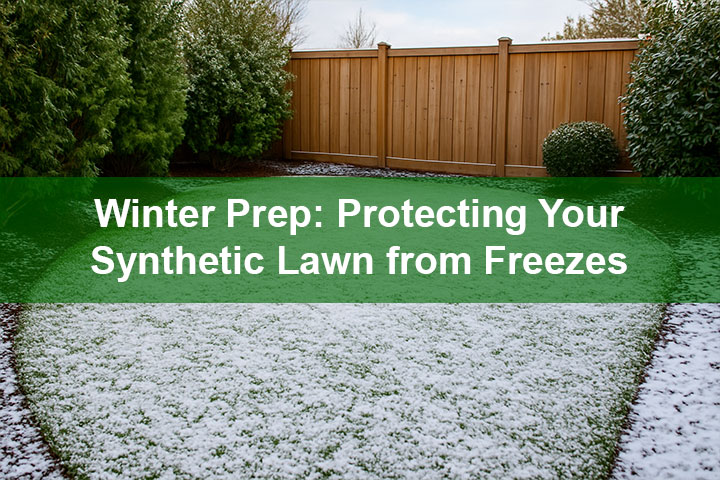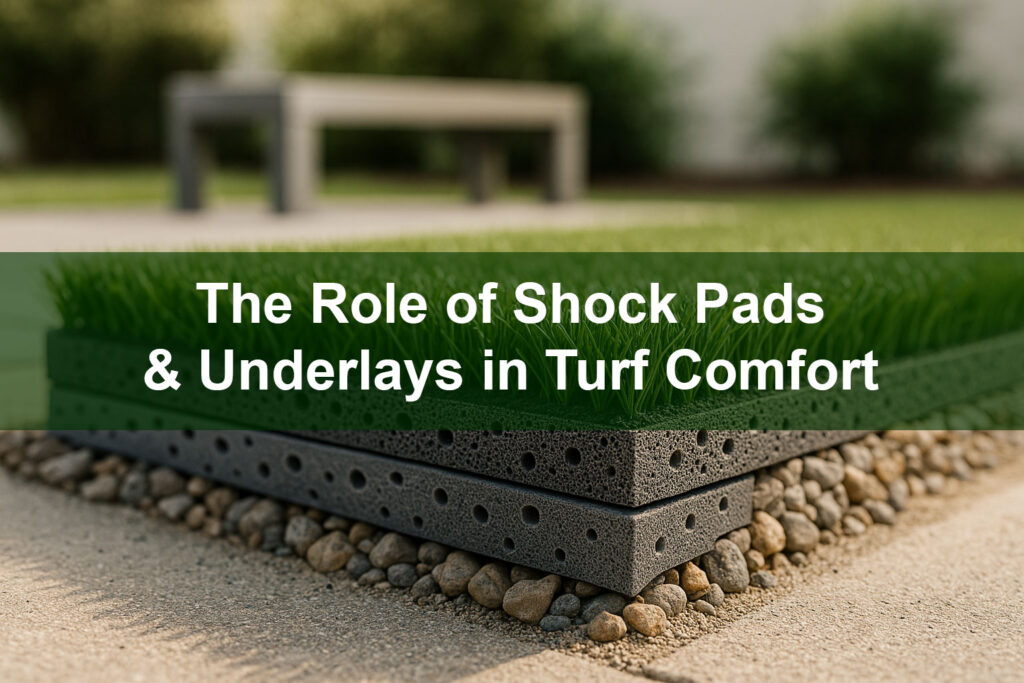Artificial grass is designed to withstand the elements, but winter weather—especially freezing temperatures—can present unique challenges. While synthetic turf doesn’t die or turn brown like natural grass, it still requires care to ensure it maintains its beauty, durability, and safety through the coldest months of the year. By preparing your synthetic lawn for freezes, you’ll protect your investment and keep it looking its best year-round.
What You’ll Learn
- How freezing temperatures affect synthetic turf
- Why snow and ice buildup can cause damage
- Step-by-step winter preparation tips
- Best practices for snow and ice removal
- Common mistakes to avoid during winter maintenance
- How infill materials respond to freezes
- Long-term benefits of proper winter care
- Case studies of synthetic lawns that endured harsh winters
1. How Freezing Temperatures Affect Synthetic Turf
Synthetic grass is made from durable polyethylene or polypropylene fibers that resist cold weather, but freezing temperatures can stiffen the blades and make them less flexible. While this doesn’t cause permanent damage, heavy use when the turf is frozen can lead to fiber breakage or stress on the infill. Additionally, repeated freeze-thaw cycles may impact drainage layers if water becomes trapped and expands.
2. The Risks of Snow and Ice Buildup
Snow itself won’t harm synthetic turf, but accumulated ice can create problems. As ice hardens, it puts stress on the blades and makes the surface slippery. If sharp tools or chemical de-icers are used incorrectly, they can damage fibers or backing. That’s why prevention and proper care are critical during winter months.
3. Preparing Your Lawn Before the First Freeze
Preparation is the key to winter resilience. Before freezing weather arrives, take these steps:
- Clear debris: Remove leaves, branches, and other organic matter to prevent mold and compaction under snow.
- Brush fibers upright: Use a stiff-bristled broom or power brush to lift blades and distribute infill evenly.
- Check drainage: Ensure your base and sub-layers drain properly to minimize standing water before it freezes.
- Top off infill: Adequate infill helps blades remain stable and prevents ice from directly binding to fibers.
4. Safe Snow Removal Practices
If you live in an area with frequent snowfall, proper removal techniques are essential. Avoid metal shovels, rakes, or sharp tools that can tear turf fibers or backing. Instead, use plastic snow shovels or a snow blower with adjustable height settings. For light snow, a simple broom or leaf blower often works best. Remember: it’s safer to remove fresh, fluffy snow than to let it compact into ice.
5. Handling Ice Without Damaging Turf
When ice does form, resist the urge to chip or scrape it away aggressively. Instead, allow sunlight and natural thaw cycles to do most of the work. For safety, you may use calcium chloride pellets sparingly, as they are generally less harmful than rock salt. Always rinse treated areas in spring to prevent residue buildup in the fibers and infill.
6. Mistakes to Avoid During Winter
Some well-intentioned maintenance efforts can do more harm than good. Avoid:
- Using metal-edged shovels or ice picks
- Applying harsh chemicals like rock salt
- Allowing heavy equipment or vehicles on frozen turf
- Burning ice with hot water (which can re-freeze and worsen problems)
7. How Infill Responds to Freezes
Different infill types respond to winter conditions in different ways. Silica sand remains relatively stable, while rubber infill can stiffen in extreme cold. Organic infills may hold moisture, increasing the risk of freeze-thaw expansion. Regular brushing and proper drainage design help keep infill evenly distributed and resilient against seasonal changes.
8. Case Studies: Turf Performance in Harsh Winters
Homeowners in northern states report that properly installed turf lawns survive winter snow and ice without permanent damage, provided they follow correct maintenance. Schools in the Midwest often use turf for sports fields year-round, proving that synthetic lawns can endure extreme cold when designed with adequate drainage and infill. Even commercial properties in snowy mountain towns rely on artificial grass to maintain green, attractive landscapes despite months of freezing conditions.
Conclusion
Winter freezes don’t have to spell trouble for your synthetic lawn. By preparing ahead of time, removing snow safely, and avoiding damaging practices, you can protect your turf and enjoy a green, durable surface all year long. With the right care, artificial grass proves to be a reliable landscaping solution—even when temperatures dip well below freezing.
Ready to winter-proof your turf? Contact Buy-Grass.com for expert advice and premium synthetic lawns that last through every season.







